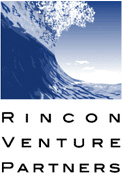Note: This is Part I in a three-part series on The Perfect Business Model. Click here for Part II, and Part III
 Authentic, hand-crafted Persian rugs always include intentional imperfections. They are said to be, “Perfectly Imperfect, and Precisely Imprecise.” The same is true with many crafts and architecture created in Muslim cultures.
Authentic, hand-crafted Persian rugs always include intentional imperfections. They are said to be, “Perfectly Imperfect, and Precisely Imprecise.” The same is true with many crafts and architecture created in Muslim cultures.
I am not a Muslim scholar, but a layman’s interpretation of this tradition of intentional errors is that it arises from the belief that attempting to emulate God’s perfection is sinful.
Fortunately, entrepreneurs need not fear running afoul of this sin when crafting their business plans, because all of them are inherently imperfect and imprecise.
If you haven't already subscribed yet, subscribe now for
free weekly Infochachkie articles!
Attributes Of The Perfect Business Model
 Although entrepreneurs need not fear offending God with their flawless business plan, it remains a worthwhile ideal. Falling short of perfection may result in a business with enough positive attributes to succeed.
Although entrepreneurs need not fear offending God with their flawless business plan, it remains a worthwhile ideal. Falling short of perfection may result in a business with enough positive attributes to succeed.
At the most basic level, the ideal business model is simple: Pour and Stir (P&S). As is true with most business axioms, this formula is straightforward - the more money you deploy, the more money you generate. As shown at left, pour your money into a customer acquisition funnel, apply a bit of gentle stirring to generate a steady flow of mo money, mo money, mo money.
A number of online business models lend themselves to such P&S wealth generating chicanery.
No matter how well honed your P&S business model, every money making machine has its limits. If you pour too much money into the top of the funnel too quickly, it will be wasted, running over the sides and never reaching the bottom. If you fail to deposit adequate cash into the top of the funnel, your results will be suboptimal. The trick is to modulate the inflow of cash with the ever changing market conditions in order to maximize your financial return.
The essence of the Pour and Stir model is represented by the following simple formula:
The cost to acquire a customer < lifetime value of a customer
Although the P&S formula is clear-cut, it presupposes that you have insight into your customer acquisition costs, as well the revenue generated by each customer.
Ideal Business Model Attributes
Some of the market and product attributes which lend themselves to the P&S business model include:
- No Inventory – Inventory sucks. It must be manufactured and shipped, it becomes obsolete, employees steal it, it must stored, customers break it, it malfunctions, and it tends to injure your most litigious customers.
- Not A Service – Services suck. They must be carried out by humans, who require pesky things like paychecks, vacations, sick time and personal days. Services do not scale, as the more services you provide, the more humans you have to hire. As noted in Pressure, you can create a comfortable lifestyle business by delivering services, but services preclude you from utilizing the P&S business model.
- Highly Trackable – Trackability does not suck. If you cannot track the cost required to acquire your customers and their lifetime values, you will be unable to take advantage of P&S. The more aspects of your business that you can quantify and measure, the closer you will come to perfection.
The stirring process involves a bit more than a simple hand crank. To properly operate the P&S model, you need a dashboard akin to a 747 control panel. The more dials you monitor, the greater your insight regarding how market factors impact your business (i.e., competitors, customers, costs, technology, etc.). However, for the dials to be meaningful, you must have the means to accurately track a variety of real-time data.
A bias toward trackability will force you and your team to justify each marketing dollar in highly quantifiable terms. If you cannot mathematically demonstrate that a particular dollar spent on customer acquisition yields more than a dollar in revenue, then do not spend that dollar.
- Salient Value Proposition – The more clear and concise your value proposition, the cheaper it will be to communicate. With GoToMyPC, we honed a very clear message, “Access Your PC From Anywhere”. As discussed in How Much For A Rib, understanding your customers’ perception of your value proposition is vital to crafting a profitable business model.
- Click, Click, Try, Buy – Ideally, customers should be comfortable purchasing your solution online, without picking up the phone. If this is not possible, offer customers a risk-free trial to utilize your solution before purchasing it. If you cannot offer a trial, capture enough information online so an inside salesperson can readily contact your prospects.
More complex sales, as well as those involving higher price points, are well served by soliciting trackable calls. Companies like RingRevenue offer advertisers the ability to track calls like clicks and thus extend the P&S model to a broader array of products and services.*
At its most elemental level, there are two macro dials you must control to execute the P&S strategy; lowering your customer acquisition costs and increasing your customers’ lifetime values. These issues are explored more fully in Parts II, and III of the P&S Series.
Perfect Imperfection
Unlike a Persian artisan, there is no need to intentionally include imperfections in your business plan. No matter how hard you try, your adVenture’s constantly evolving business will always fall short of perfection. However, by understanding the principles of the P&S approach, you may create a business in which you consistently convert a dollar into a dollar and change. Once you accomplish this, your P&S business will create significant wealth for you, your employees and the remainder of your Stakeholders, إن شاء الله.
Full Disclosure: I sit on RingRevenue’s Board in my capacity as a Partner at Rincon Venture Partners.
______________________
John Greathouse has held a number of senior executive positions with successful startups during the past fifteen years, spearheading transactions which generated more than $350 million of shareholder value, including an IPO and a multi-hundred-million-dollar acquisition.
John is a CPA and holds an M.B.A. from the Wharton School. He is a member of the University of California at Santa Barbara’s Faculty where he teaches several entrepreneurial courses. He is also the author of an award-winning entrepreneurial blog infoChachkie.com. You can learn more about his experiences at johngreathouse.com
______________________
<
Copyright © 2007-9 by J. Meredith Publishing. All rights reserved.
Share and Enjoy
John Greathouse is a Partner at Rincon Venture Partners, a venture capital firm investing in early stage, web-based businesses. Previously, John co-founded RevUpNet, a performance-based online marketing agency sold to Coull. During the prior twenty years, he held senior executive positions with several successful startups, spearheading transactions that generated more than $350 million of shareholder value, including an IPO and a multi-hundred-million-dollar acquisition.
John is a CPA and holds an M.B.A. from the Wharton School. He is a member of the University of California at Santa Barbara's Faculty where he teaches several entrepreneurial courses.
Note: All of my advice in this blog is that of a layman. I am not a lawyer and I never played one on TV. You should always assess the veracity of any third-party advice that might have far-reaching implications (be it legal, accounting, personnel, tax or otherwise) with your trusted professional of choice.


Get real world advice from John Greathouse, Subscribe Today.


Pingback: Pour And Stir II | infoChachkie
Pingback: UnVenture Capitalists: Seek Investors Aligned With Your Interests, Not Their Egos | infoChachkie
Pingback: Quora
Pingback: Quora
Pingback: Quora
Pingback: 10 Reasons To Start A Company In An Economic Downturn
Pingback: Discover The Hidden Persuasion Techniques Concealed In Online Ads
Pingback: Discover The Hidden Persuasion Techniques Concealed In Online Ads | WebBizBanners.com
Pingback: What are the major milestones of building up a marketing department in a consumer-oriented online startup? - Quora